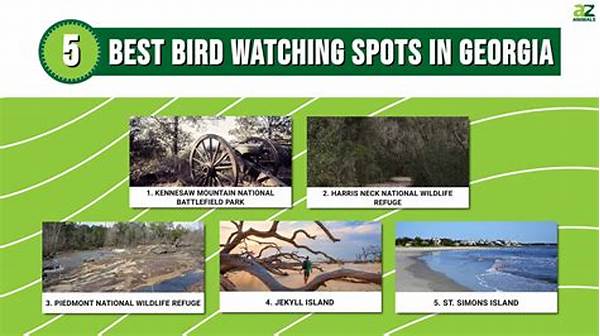- H1: Bird Watching Spots in Natural Tourism Areas
- H2: Why Bird Watching Spots in Natural Tourism Areas Matter
- Rangkuman tentang “bird watching spots in natural tourism areas”:
- Tujuan dari Bird Watching Spots in Natural Tourism Areas
- H2: Exploring Bird Watching Spots in Natural Tourism Areas
- H2: Illustrations of Bird Watching Spots in Natural Tourism Areas
H1: Bird Watching Spots in Natural Tourism Areas
Bird watching, or birding, is a delightful pursuit that combines the pleasures of being in nature with the thrill of spotting a myriad of feathered species. Whether you’re an enthusiastic ornithologist or a casual nature lover, bird watching offers a unique connection to the environment, allowing you to experience the wonders of avian life in their natural habitats. The beauty of bird watching lies not only in observing diverse species but also in appreciating the tranquil settings that these creatures call home. Bird watching spots in natural tourism areas provide an ideal opportunity to unwind, explore, and learn, making it an exceptional way to spend leisure time.
Read More : Latest Entrance Fees For Puncak Nature Tourism
Imagine waking up at dawn to the chorus of chirping birds, setting out with your binoculars and field guide in hand, and embarking on a journey through lush forests, serene wetlands, or expansive grasslands. These bird watching spots in natural tourism areas are teeming with life, and each location tells a unique story of avian behavior and habitat. You’ll find yourself mesmerized by the vivid plumage of exotic birds, the melodious calls echoing through the trees, and the silent, graceful flight of raptors overhead.
The popularity of bird watching is soaring, partly because it offers a peaceful retreat from the hustle and bustle of everyday life. It caters to individuals of all ages and walks of life, providing an immersive experience that is both educational and exhilarating. In natural tourism areas, bird watching not only supports conservation efforts but also boosts local economies by attracting enthusiasts eager to explore the biodiversity of a region.
In recent years, research has shown that bird watching has significant psychological benefits, fostering mindfulness and a sense of connectedness to the natural world. As you step into these bird watching spots in natural tourism areas, you’ll discover that this hobby is more than just a pastime; it’s a gateway to a deeper understanding of our environment and our place within it.
Captivated by stories from fellow birders, intrigued by the allure of spotting rare species, and inspired by the breathtaking backdrops, many have taken up bird watching with fervor. Thanks to the myriad of natural tourism areas globally, you’re never too far from a perfect spot. Embarking on this journey could be your ticket to discovering a side of nature you’ve never seen before.
H2: Discovering the Best Bird Watching Spots in Natural Tourism Areas
As we delve deeper into exploring bird watching spots in natural tourism areas, the adventure becomes not only about observing birds but also about the stories these places hold. From wetlands brimming with migratory species to forests echoing with the calls of native birds, each spot offers a unique slice of paradise for enthusiasts. Seasoned birders often exchange tales of their first sightings of elusive species like the rare Shoebill in the African wetlands, the colorful Resplendent Quetzal in Central America, or the iconic Bald Eagle soaring over North American landscapes.
For those just dipping their toes into the waters of this hobby, guided bird watching tours offer an excellent introduction. Knowledgeable guides provide insights not only about the birds themselves but also about the delicate ecosystems they inhabit. These tours can be found in numerous natural tourism areas, ensuring that there is a perfect fit for every birder, whether they prefer the tropical allure of rainforests or the rugged charm of mountains.
H2: Why Bird Watching Spots in Natural Tourism Areas Matter
Bird watching in natural tourism areas has gained significant traction for numerous reasons. Firstly, it serves as a platform for environmental education, allowing visitors to comprehend the remarkable biodiversity present in these areas. By observing birds, people learn about the intricate balance that sustains life, fostering a respect for ecosystems that is vital for conservation efforts.
H3: The Rise of Eco-Tourism and Bird Watching
In an era where eco-tourism is thriving, bird watching spots in natural tourism areas are becoming more crucial than ever. As travelers seek sustainable travel options, bird watching provides an avenue to connect with nature while minimizing environmental impact. Destinations around the world are now marketing their rich avian life as a selling point, enhancing their appeal to eco-conscious tourists.
Bird watching also contributes significantly to local economies. Communities that embrace tourism centered around bird watching benefit from increased revenue streams, creating jobs and supporting local businesses. It’s not just about the birds, though; it’s about the symbiotic relationship between communities, tourists, and the natural world, all thriving together.
To illustrate, let’s take the example of Costa Rica, a global leader in eco-tourism. With its vast array of bird species, the country attracts countless bird enthusiasts each year. The resulting tourism plays a vital role in safeguarding habitats and providing a sustainable livelihood for local populations, reinforcing the importance of preserving these natural areas.
Rangkuman tentang “bird watching spots in natural tourism areas”:
Tujuan dari Bird Watching Spots in Natural Tourism Areas
The primary aim of bird watching spots in natural tourism areas is to uphold the conservation of avian habitats while fostering economic growth within local communities. By creating and promoting these areas, regions can preserve biodiversity, which is crucial for ecological balance. Protecting bird habitats ensures that future generations can enjoy the same abundance of species and landscapes that we do today.
Read More : Top Eco-lodges In Natural Tourism Destinations
Another objective is to educate the public about the significance of bird conservation. When individuals engage in bird watching, they develop a deeper understanding and appreciation for the complex ecosystems that support bird life. This knowledge often translates into advocacy, inspiring people to contribute to conservation efforts and promote environmental stewardship.
Furthermore, bird watching spots in natural tourism areas serve as a catalyst for cultural exchange. Visitors from around the globe converge in these locations, bringing diverse perspectives and experiences. This mingling of cultures can lead to broader cooperation in conservation initiatives and a shared commitment to protecting our planet’s natural beauty.
Lastly, the development of bird watching in tourism areas aims to create sustainable ecosystems for human and wildlife cohabitation. It highlights the interconnectedness of various species and the integral role each plays within the environment, fostering a respect for all forms of life and encouraging practices that benefit both nature and society.
H2: Exploring Bird Watching Spots in Natural Tourism Areas
Bird watching provides an escape into nature’s wonders, and the exploration of specific bird watching spots in natural tourism areas opens doors to unique and unforgettable experiences. Enthusiasts are often in awe of the vivid landscapes that play host to a wide variety of avian species. These areas, carefully conserved, offer a window into the delicate balance of life and the raw beauty of the natural world.
H3: The Impact of Bird Watching Tourism on Local Economies
One of the significant advantages of bird watching in tourism areas is its positive impact on local economies. As bird watchers flock to these destinations, they contribute economically, supporting small businesses, and creating job opportunities. From local guides to accommodation services, the entire supply chain benefits, highlighting the multifaceted impact of eco-tourism.
The growth of bird-friendly tourism areas exemplifies how conservation can go hand-in-hand with economic advancement. This win-win scenario showcases the potential for tourism to act as a driving force in preserving natural habitats while also providing economic stability to local communities. Through education and engagement, the long-term benefits of bird watching tourism ensure both nature and humanity can thrive.
H2: Illustrations of Bird Watching Spots in Natural Tourism Areas
Bird watching is more than a hobby; it is an immersive experience that invites us to engage with our natural surroundings actively. Each illustration above represents a habitat rich with ecological value and intrinsic beauty, perfect for exploration and discovery. As you travel to these bird watching spots in natural tourism areas, you’ll not only enrich your knowledge of bird species but also contribute to the conservation efforts that keep these environments thriving.
Bringing awareness to such spots highlights the critical role they play in sustaining our planet’s biodiversity and emphasizes the balance we must maintain to ensure that ecosystems continue to flourish. Through responsible tourism and a shared love for birding, we can inspire a collective movement towards environmental sustainability and a deeper connection with nature.


